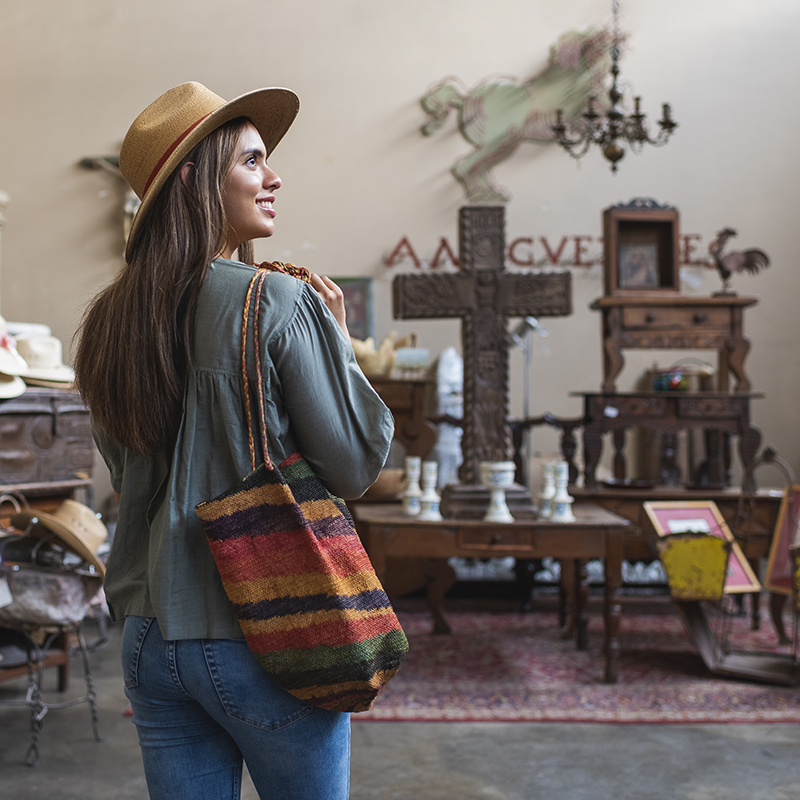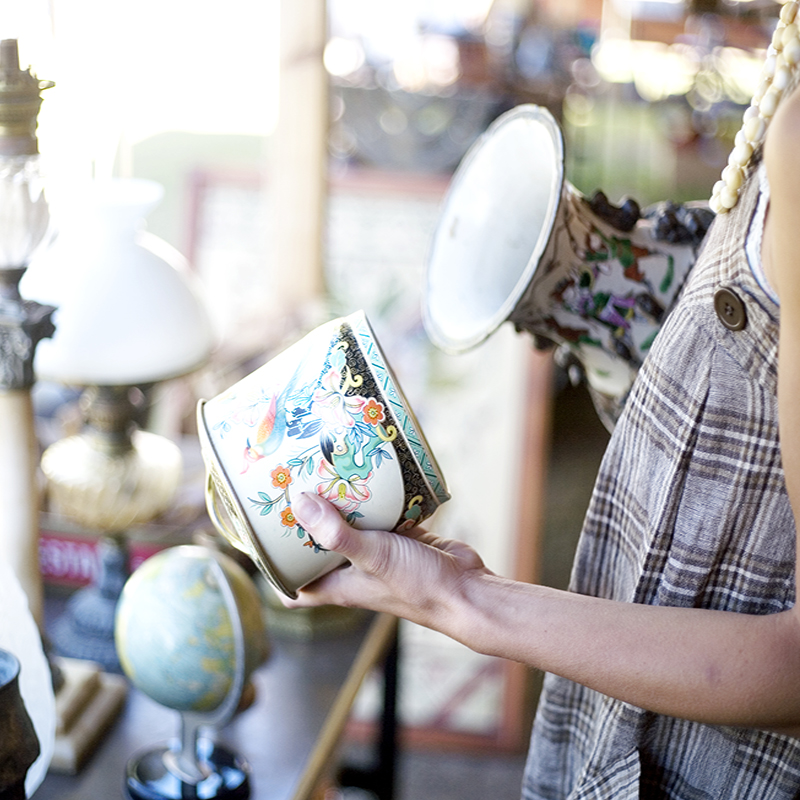
We all appreciate something shiny and new, but many are drawn as well to items that have long been loved. Not only do antique pieces have charm, but some have added value, whether it’s monetary or sentimental—as the saying goes, one man’s trash is another man’s treasure. Even if your home is filled with modern furniture and accessories, antiques can be easily integrated into the décor.
And consumers are taking note. By the end of this year, the online antiques and collectibles sales industry in the U.S. is expected to generate $2.8 billion in revenue, according to IBISWorld. The same report shows the industry has grown 13.1 percent on average between 2018 and 2023. So, who’s buying these second-hand pieces? Everyone, says Asheford Institute of Antiques, one of the world’s leading schools for antiques-appraising training. But the group notes young buyers and millennials make up the bulk of the power purchasers, and they’ve been eyeing prizes like Victorian-era chairs, French country tables and lamps, juxtaposing their modern homes and décor.
 If you’ve been thinking about exploring the antiques market and shopping for a few older pieces, you can start at a local antiques shop or sift through bins at flea markets and second-hand stores. Just keep a few things in mind: Many pieces may appear “antique,” but unless you have a keen or trained eye, their authenticity is not always guaranteed. Also remember that the term “antique” is associated with an item that is at least 100 years old, whereas a “vintage” good is not as old but at least 30 to 40 years old.
If you’ve been thinking about exploring the antiques market and shopping for a few older pieces, you can start at a local antiques shop or sift through bins at flea markets and second-hand stores. Just keep a few things in mind: Many pieces may appear “antique,” but unless you have a keen or trained eye, their authenticity is not always guaranteed. Also remember that the term “antique” is associated with an item that is at least 100 years old, whereas a “vintage” good is not as old but at least 30 to 40 years old.
With that in mind, buying from a certified antiques dealer or auction house not only guarantees an article’s genuineness, but many of these professionals can help buyers skip the hunt by finding exactly what they’re looking for. Bloomfield-based auctioneer and appraisal firm Nye & Co., for instance, partners with its clients to verify, price and post auction items for sale online.
“We scrutinize each object in an effort to provide accurate condition reports for the lots in an auction, and we don’t hesitate to recommend potential buyers don’t pursue an item,” says John Nye, president of Nye & Co. He adds that he and his team then work with prospective buyers, whether they’re seasoned antiquers or rookies, to browse and bid.
“We have different levels of auction, giving new participants an opportunity to bid on pieces for modest prices and so bidders can get the taste of the adrenaline rush of an auction without risking much money,” Nye says, adding that online auctions have some advantages over in-person events. “There is also the benefit of a lengthy pre-sale public viewing when one can visit multiple times to study and soak up the piece in question. The auction house staff is also passionate about the pieces and the process and is always willing to share knowledge with new buyers.”
Ready to shop? In New Jersey, there are dozens of online antiques shops and auction sites, including Nye & Co., Bodnars Auction in New Brunswick and Willow Auction House in Lincoln Park. If you’re more into brick-and-mortar and want to test your luck in-person, you’ll find antiques stores throughout historic and walkable downtowns in Cape May, Lambertville, Montclair and Somerville, among others. And if you want to experience an in-person auction, follow their schedules for upcoming events.
“With New Jersey being as densely settled and historic as it is, the range and quality of pieces that can show up at auction run the gamut in age, quality and value,” says Nye. “For example, one can find ‘ordinary’ household furnishings and ‘traditional’ antiques: silver plate and sterling silver; costume and magnificent jewelry; prints and posters—or the long-lost Rembrandt painting that we sold in 2018 for $1.1 million.”
What’s your favorite antiquing area in New Jersey? Tell us on Instagram @njhomemag, and be sure to grab your copy of the brand-new summer 2023 issue of NJ HOME, out now.